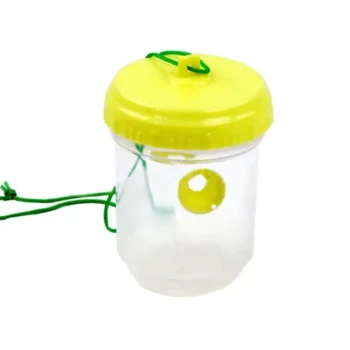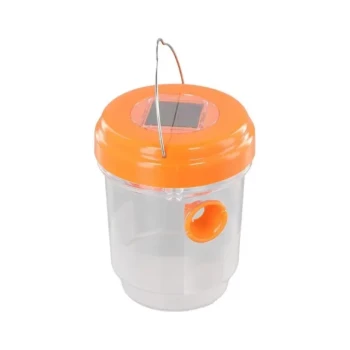To collect propolis, beekeepers use specially designed plastic traps with small slits that are placed on top of the hive. By propping up the outer cover to create small drafts and let in light, the beekeeper encourages the bees' natural instinct to seal these gaps with propolis, effectively filling the trap for collection.
The core principle of propolis harvesting is not just collection, but manipulation. By intentionally creating gaps and drafts that the bees perceive as a threat to the hive's integrity, you stimulate them to produce and deposit propolis where you can easily harvest it.

Understanding Why Bees Produce Propolis
The Hive's Natural Sealant
Propolis, often called "bee glue," is a resinous substance bees create from tree buds and other botanical sources. They use this potent material to seal cracks, waterproof the hive, and leverage its antimicrobial properties to defend against pathogens.
Triggers for Production
Bees are compelled to produce propolis when they detect vulnerabilities in their home. This includes rough hive surfaces, drafts, unwanted light, and any cracks smaller than their standard "bee space" of about 5/16th of an inch.
The Mechanics of a Propolis Trap
What is a Propolis Trap?
The most common trap is a thin, flexible plastic sheet designed with many narrow slits or grooves. These gaps are too small for bees to pass through but are perfectly sized to trigger their powerful sealing instinct.
How to Install the Trap
The trap is placed directly on top of the uppermost hive box, just beneath the inner and outer covers. It replaces the standard inner cover during the collection period.
Encouraging the Bees to Fill It
To maximize collection, beekeepers often prop up the outer hive cover slightly. This allows small amounts of light and air to enter, which motivates the bees to work diligently to seal the slits in the trap below with propolis.
The Harvesting and Processing Workflow
Removing the Full Trap
Once the bees have filled most of the slits, the beekeeper removes the trap from the hive. The timing depends on the strength of the hive and the season.
Freezing and Separating the Propolis
The entire trap is then placed in a freezer. Once frozen solid, the propolis becomes very brittle, allowing the beekeeper to easily remove it by flexing, twisting, or sharply tapping the trap against a hard surface.
Creating a Tincture
A common way to use raw propolis is to create a tincture. This involves mixing the collected propolis with a high-proof alcohol (such as 70% ethyl alcohol) and allowing it to steep for several weeks before straining out the solids.
Understanding the Trade-offs and Best Practices
Prioritize Hive Strength
A propolis trap should only ever be placed on a strong, thriving hive. If a colony is robust enough to require a honey super, it is generally considered strong enough to handle the extra work of propolis collection.
The "No-Trap" Method for Small Amounts
For hobbyists needing only small amounts for personal use, a trap isn't necessary. You can simply scrape excess propolis from hive bodies, frames, and super boxes during regular inspections or after the honey harvest. This is a less invasive approach.
Knowing When to Stop
Harvesting must cease in the fall. Bees need an ample supply of their own propolis to properly insulate their hive and protect it from moisture during the cold winter months. Removing it too late puts the colony at risk.
A Note on Allergies
It is important to be aware that some individuals can have an allergic reaction to propolis. Caution is advised when handling it or using it for the first time.
Making the Right Choice for Your Goal
Deciding how to collect propolis depends entirely on your objectives as a beekeeper.
- If your primary focus is efficient, larger-scale harvesting: Using a dedicated propolis trap is the standard method for producing a clean and significant yield for commercial or personal production.
- If your primary focus is small-scale personal use or natural beekeeping: Simply scraping excess propolis from hive components during routine maintenance is sufficient, less invasive, and respects the bees' natural processes.
By understanding the bees' needs first, you can harvest this valuable resource sustainably and responsibly.
Summary Table:
| Collection Method | Best For | Key Steps |
|---|---|---|
| Propolis Trap | Larger-scale, commercial harvest | Install trap under outer cover, encourage sealing, freeze to harvest |
| Scraping (No-Trap) | Small-scale, personal use, natural beekeeping | Scrape excess propolis from frames & hive bodies during inspections |
Ready to scale your propolis production? HONESTBEE supplies commercial apiaries and beekeeping equipment distributors with the durable, wholesale-focused supplies needed for efficient harvesting. From high-quality propolis traps to essential hive tools, we provide the equipment for sustainable, high-yield operations. Contact our wholesale experts today to discuss your apiary's needs.
Visual Guide

Related Products
- Reusable Wasp Trap Bottle Converter
- Removable Plastic Pollen Trap With Ventilated Tray for Bees Pollen Collector
- Gourd Shaped Hanging Wasp Trap Professional Wasp Catcher
- Plastic Beetle Blaster Trap Beekeeping Tools and Supplies
- Professional Bucket Style Wasp and Moth Pheromone Trap
People Also Ask
- What are the steps for installing hive beetle traps? A Guide to Effective Beetle Control
- What alternative to oil is recommended for beetle traps? Switch to Dry Desiccants for a Cleaner, Odor-Free Solution
- Why are hive beetle traps important for beekeepers? Protect Your Hive from a Devastating Infestation
- What are the main uses of bee-collected pollen? A Guide for Apiary Management and Product Sales
- What is a pollen trap and how does it work? A Guide to Harvesting Bee Pollen



















